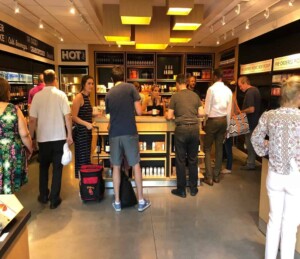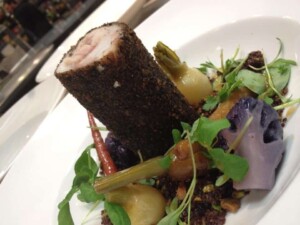When JGL guides our clients through an RFP process, some of the primary qualities we look for in a foodservice provider are a willingness to be a true partner and a passion for the mission of the cultural institution. As a former operator, I would frequently look at what resources I could bring to bear and try to determine ways that I could use the F&B program to support my client’s mission. I would also work closely with my cultural institution’s Development department and leverage our buying power to solicit large donations for the museum. We might agree to exclusively sell a particular lemonade for a pre-determined period of time in exchange for a $25,000 donation to the museum. For the vendor, they may not make that $25,000 back in direct profit and most cultural institutions will not allow them to display extensive marketing materials, but what I was really leveraging was the opportunity to associate their brand with an iconic cultural institution. If I was working on a P&L financial model, the decision to carry that particular lemonade might not be the most potentially profitable, but it was an invaluable investment in my client relationship.
At a recent Hollywood Bowl performance of Verdi’s “Otello,” the foodservice operating team of Sodexo and the Lucques Group were hosting one of their bi-weekly wine events called Somm Sundays. This, combined with their Wednesday Winemaker series, offers complimentary wine tastings in the Bowl’s Plaza Marketplace prior to performances. The series, curated by James Beard’s Outstanding Restaurateur winner Caroline Styne, offers patrons the chance to sample wines from smaller, artisanal winemakers from across the region. This is a prime example of a foodservice provider leveraging their vendor relationships to craft a unique guest experience. This gesture enhances the overall value of the ticket price for the concert, while creating an opportunity to generate additional wine sales with little monetary investment from either the foodservice provider or the cultural institution because the sample wines are generally provided by the winemakers.

When I was General Manager of the Los Angeles County Museum of Art (LACMA), my team created a series of pop-up dinners to support the widely popular Stanley Kubrick exhibition. We would host these dinners each night before Kubrick film screenings. We transformed our small café into a fine dining room for the evening and served a five course prix fix dinner uniquely inspired by each film. For example, this pork roulade mimic’s the iconic obelisk in 2001: A Space Odyssey:

Prior to the screening of the newest Danny Boyle film, we executed five courses based around his oeuvre, including this Scotch egg with a beet sauce pipet inspired by his film Trainspotting:

Were these dinners highly profitable? No. Frankly, they were a tremendous amount of work for relatively little return, but the benefits were remarkable. The dinners received ebullient press coverage for the museum and gave our guests a truly unique, memorable artistic experience that they warmly associated with our client. It also gave our café staff a chance to be incredibly creative and show that they could stand toe to toe with the best of Los Angeles. It gave my front of house retail staff a chance to make some good tip money to supplement their normal hourly wage and it gave me a chance to cross train them so that they could fill in at our fine dining restaurant when needed. Most importantly, it was an opportunity for my team to show our client that our number one focus was on our shared mission.
There are myriad ways to earn far more money with far less work than operating foodservice in cultural institutions. If your foodservice provider isn’t passionate about your mission and isn’t going above and beyond for you every day; if they aren’t actively seeking out new, innovative, mutually beneficial ways to support your institution’s reason for existing; if the only thing that they are doing is providing food…it might be time to find a better partner.

